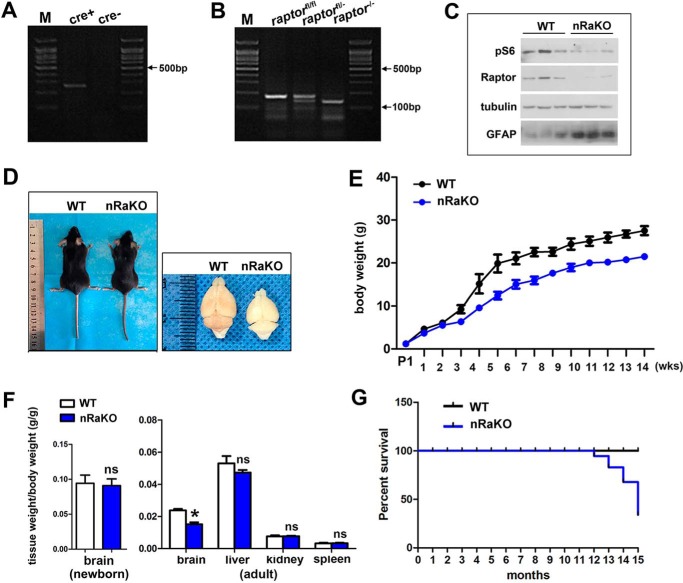FIGURE 1.
Raptor deletion in mature neurons results in inactivated mTORC1 signaling and decreased brain size and lifespan. A, genotyping of the offspring after mating transgenic Cre and LoxP mice. The expected band of mutant carrying a Cre-recombinase gene is nearly 250 bp. M, molecular weight markers. B, genotyping of the offspring after mating transgenic Cre and loxp mice. The expected band of mutant carrying floxed Raptor allele is nearly 180 bp, and bands of ∼180 and ∼150 bp were detected in heterozygote mice. C, expression of total P-S6, Raptor, and GFAP was measured by Western blotting in the forebrain of control and nRaKO mice. mTORC1 inhibition, as reflected by P-S6 and Raptor expression, is decreased when compared with controls. Astrogliosis, as reflected by GFAP expression, was increased when compared with controls. Tubulin was included as an internal control for protein loading. (n = 5). D, decreased body size and brain size in adult nRaKO mice. No difference in brain size of newborn nRaKO mice was detected when compared with wild type. E, continuously decreasing body weight of nRaKO mice (n = 18) when compared with controls (n = 22). Body weight of mice was weighed every week after P1. F, decreased weight of P90 brains from nRaKO mice (n = 12) when compared with controls (n = 20). Weight of other organs (liver, spleen, kidney) has no variation. G, nRaKO mice (n = 12) died earlier than wild type mice (n = 18) (lifespan up to 12–15 months). All data are represented as mean ± S.E. (*, p < 0.05); ns means no significant difference.

